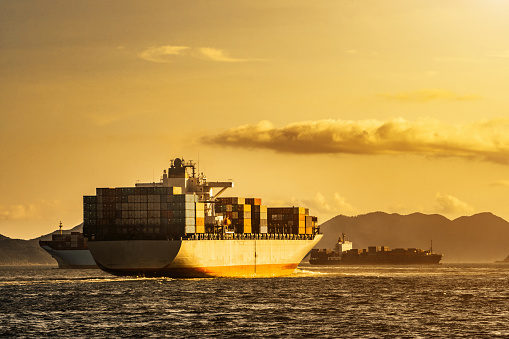Since last year, high shipping costs, tight space, have become the most headache to the tire exporters.
Recently, Martin Dixon, an expert from an internationally renowned shipping consulting company, was interviewed by foreign media to explain the causes of the global shipping crisis and share his views on the future market.
COVID-19 upsets everything:
Normally, tires made in Southeast Asia can be shipped to north American ports within 90 days. Today, the process takes six months or more.
Martin Dixon believes that the root cause of the longer shipping schedule and higher freight rates is the COVID-19 pandemic.
he impact of the pandemic has been felt, first in the volatile demand for freight, so shipping lines have had to reduce capacity, which has further affected the container supply chain.
Specifically, trade volumes shrank in the first half of last year as the global economy was shut down due to the COVID-19 pandemic.
In response, shipping companies has cut downed capacity. On some trade routes, capacity has been reduced by 30 % because of cancellations. This wreaks havoc on container recycling.
As a result, in regions with imbalanced trade, such as between Asia and North America, containers are piling up on one side and hard to find on the other.
That means when trade recovered strongly in the second half of last year, there were not enough containers where they were needed.
At the same time, shipping companies have increased flights to meet surging demand. This led to increased congestion at ports at the end of last year.
In addition, the operation of some ports has also been restricted by the spread of the epidemic.
This has been accompanied by congestion in the Suez Canal, disruption of land transport chains (freight and storage businesses affected by the pandemic) and more.
All these different factors, happening at the same time around the world, have had a devastating effect on the supply chain of the freight.
The freight won't come down:
Before the outbreak, shipping a 1x40HC from The port of Shanghai to the port of Los Angeles typically cost about $1,500.
Now, the cost of doing that has increased multiplied. As a result, freight rates have also risen sharply.
Martin Dixon explained that there were two main reasons for the increase.
More important is the supply chain disruption mentioned above is the change in the nature of the market: from a buyer's market to a seller's market.
The latter factor has a longer impact on freight rates.
For more than a decade, the shipping industry has suffered from overcapacity and rates have been low.
Some enterprises in the freight supply chain, unable to make profits for a long time, have withdrawn from the market.
During the outbreak, these companies were particularly tested.
Today, the shipping industry is more concentrated, with a few operators controlling most of the market, Martin Dixon said.
Therefore, high freight has become shippers need to face the new normal.
The crisis will not be reversed any time soon:
Many tire foreign trade personnel, looking forward to shipping difficulties in the second half of the year can be alleviated.
Martin Dixon believes that in the short term, rather than getting better, things will get worse.
He said retailers and manufacturers were building up inventories for the year-end sales peak as international trade entered the peak season for container traffic.
So in the short term, port congestion will remain a big problem.
Once the peak season is over and we get into the fourth quarter, things may start to pick up.
Martin Dixon said the shipping industry would be very busy in the run-up to the Chinese New Year holiday. This situation is expected to continue until the end of the first quarter of next year.
